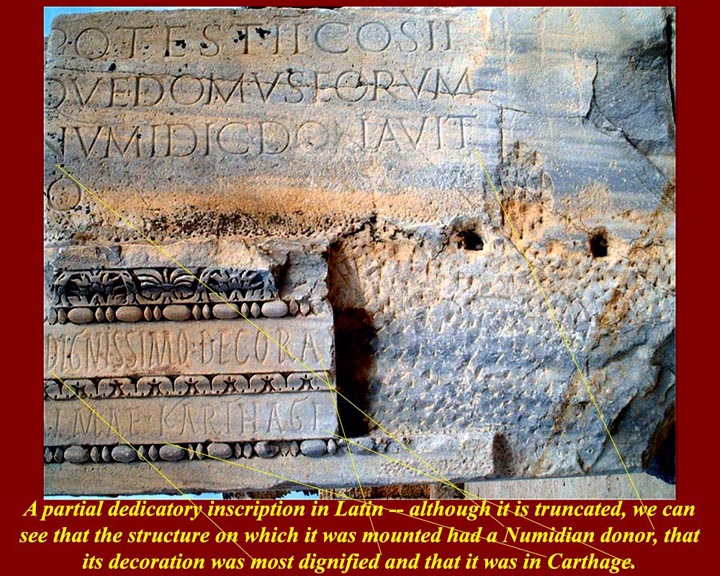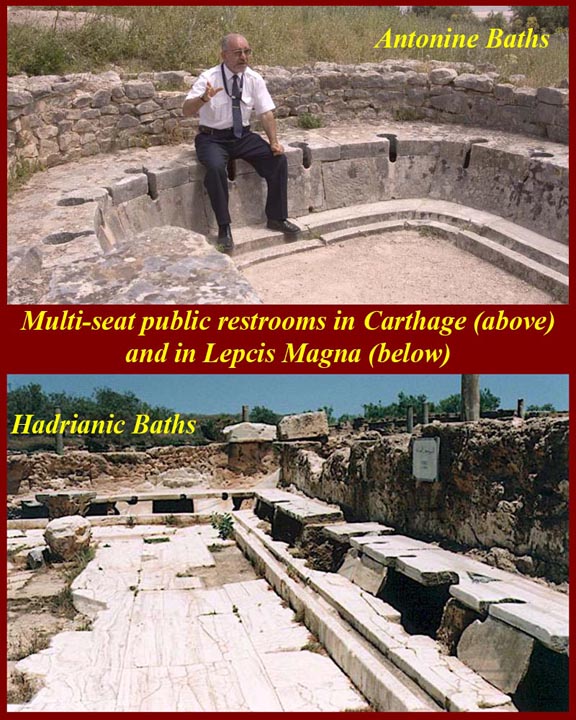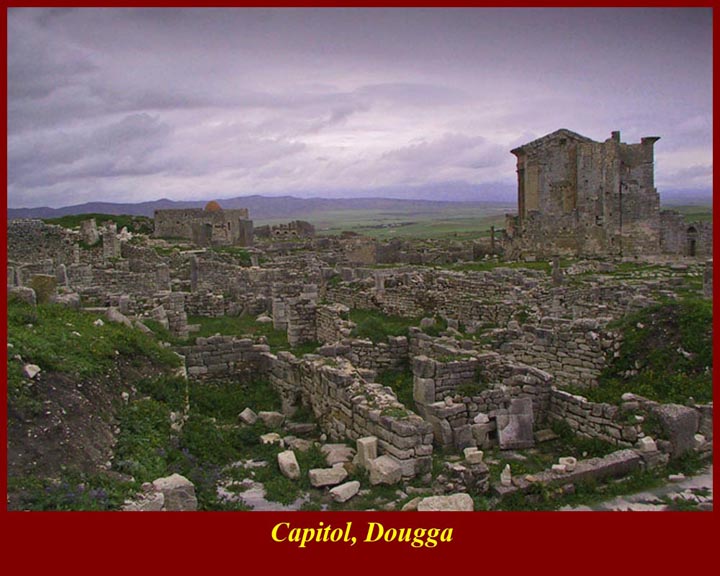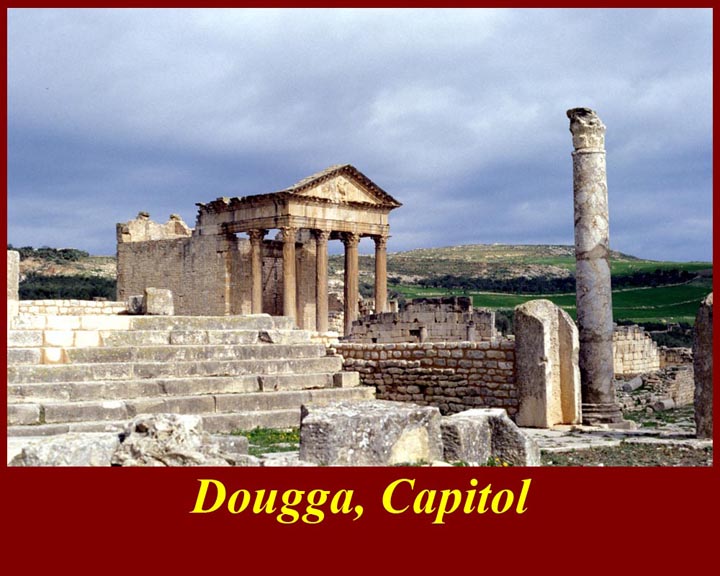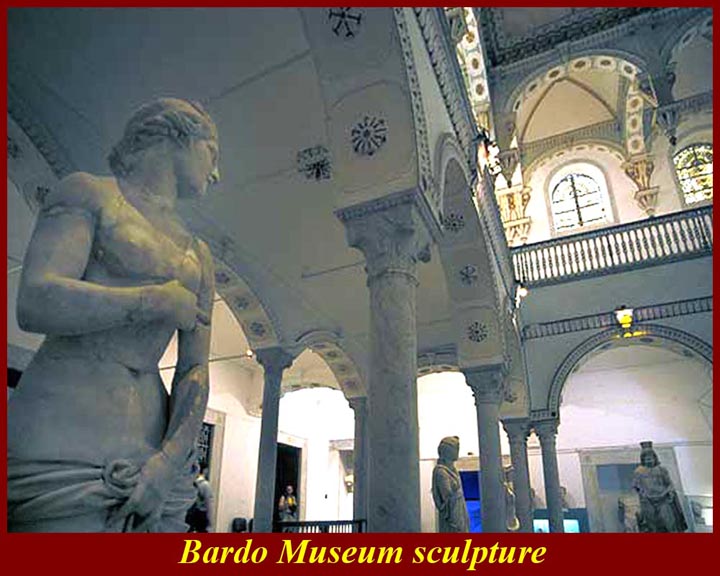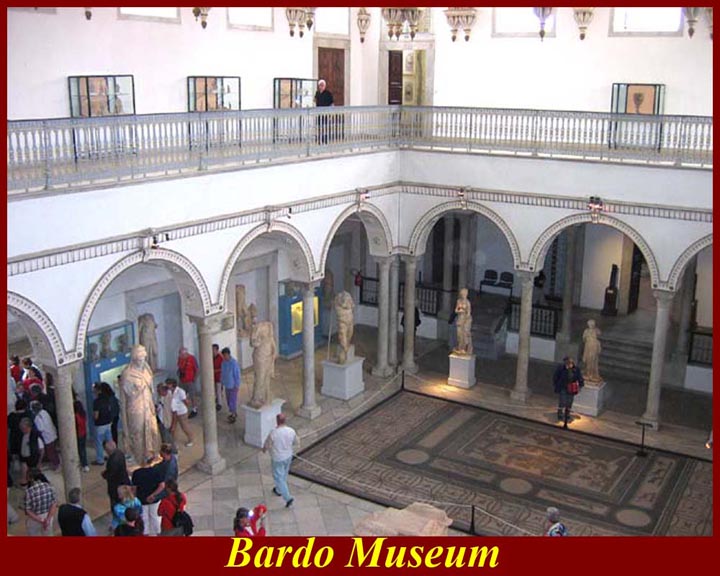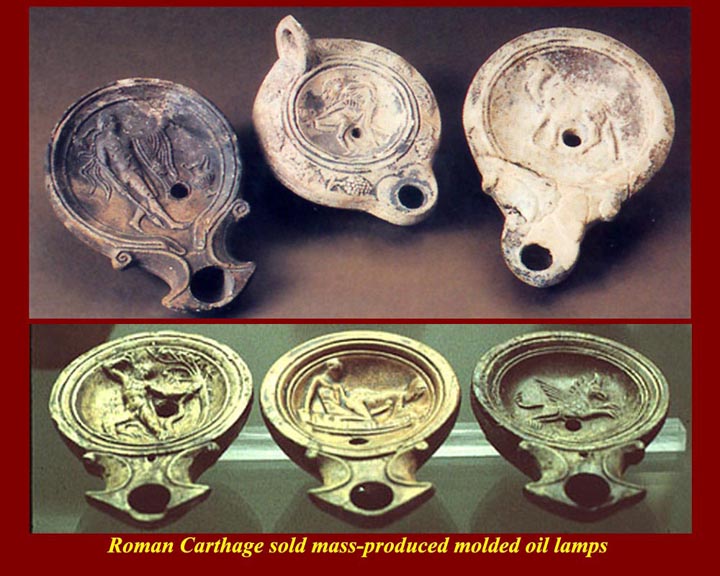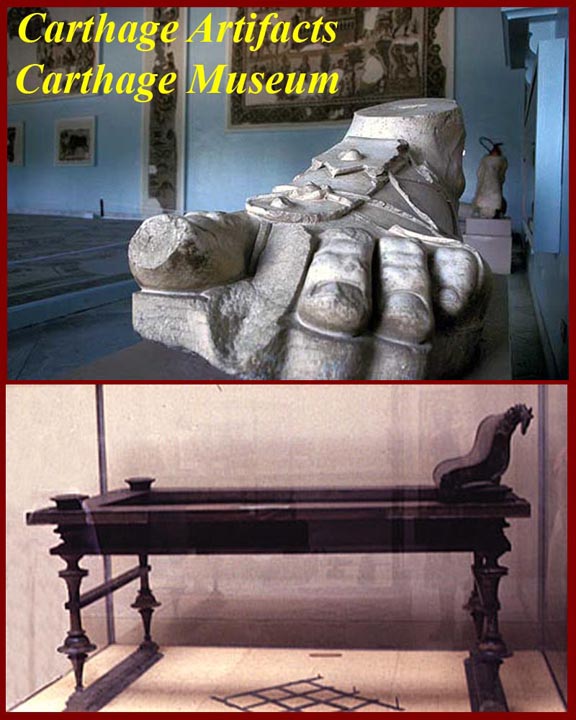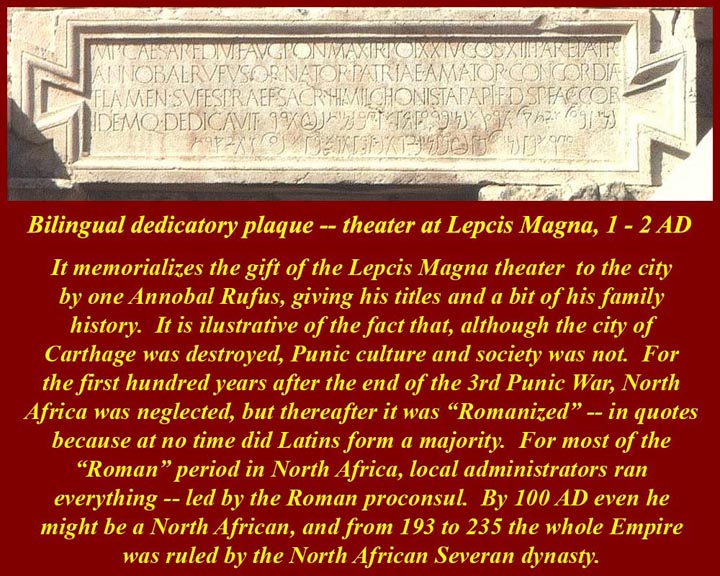
http://www.mmdtkw.org/CNAf0801BilingualTheaterDedication.jpg
Rome destroyed Carthage and sold its remaining population into slavery, but the other Punic cities along with Punic culture and language survived. In a short time, prosperous Punic inhabitants of North Africa were integrated into the Roman bureaucracy and Roman officialdom. This plaque memorializes the donation of the Theater of Lepcis Magna by a Punic member of the Roman power structure.
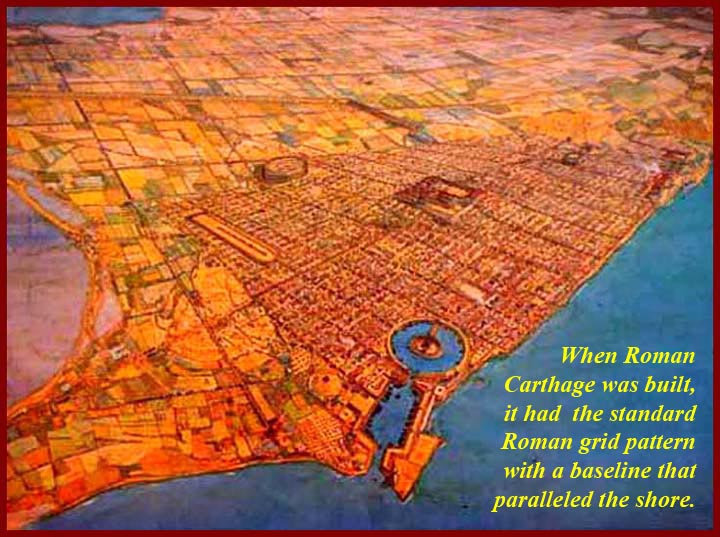
http://www.mmdtkw.org/CNAf0802RomanCarthage.jpg
Rome's destruction of Carthage was complete, and it literally cleared the ground for the eventual construction of a new city on the site of ancient Carthage. The new city, of course, was built on the standard Roman grid pattern.
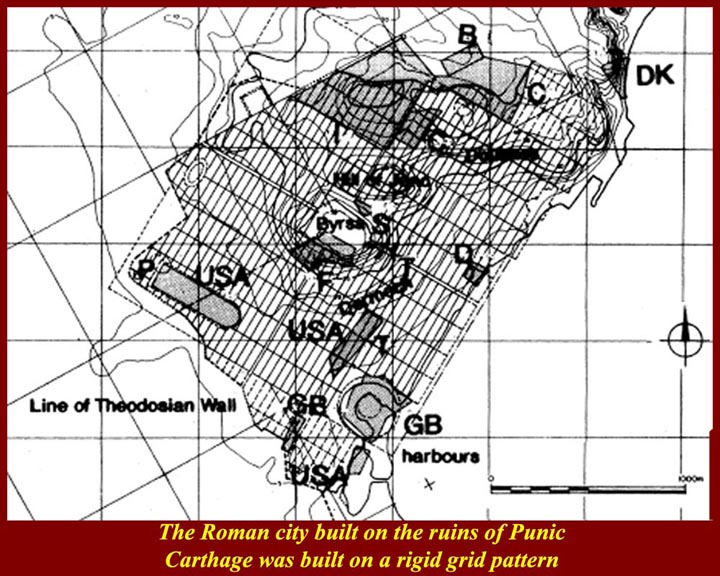
http://www.mmdtkw.org/CNAf0803RomanCarthageGrid.jpg
The Roman Carthage grid was centered on the Byrsa Hill and was oriented to the shoreline. The pattern undoubtedly continues beyond what is shown in the image. The letters on the grid represent the countries that did the large-scale excavations.
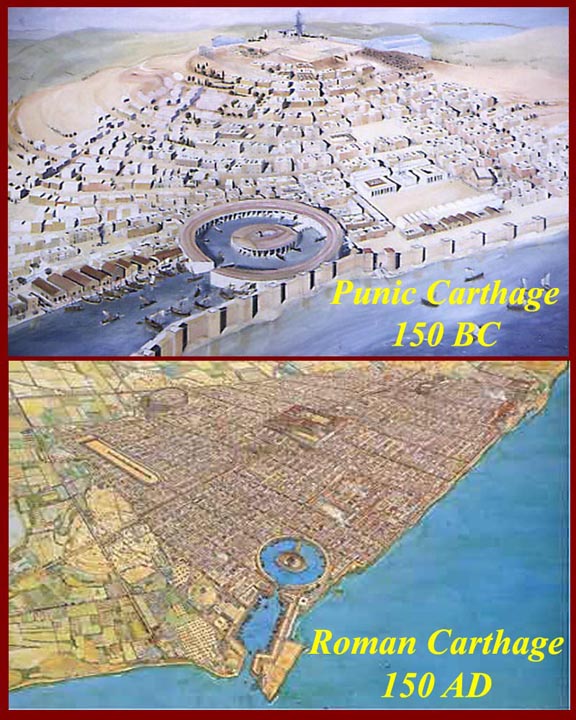
http://www.mmdtkw.org/CNAf0804PunicRomanCarthage.jpg
The Punic plan of Carthage radiated from the Byrsa temples. The Roman plan on the same site was much more regular and much more dense.
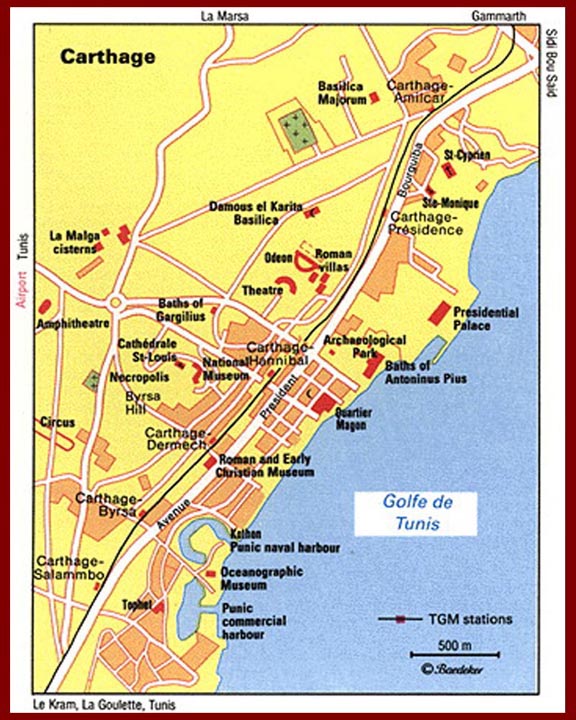
http://www.mmdtkw.org/CNAf0805ArcheologicalCarthage.jpg
The major sites are spread among the suburban sprawl of Tunis City.
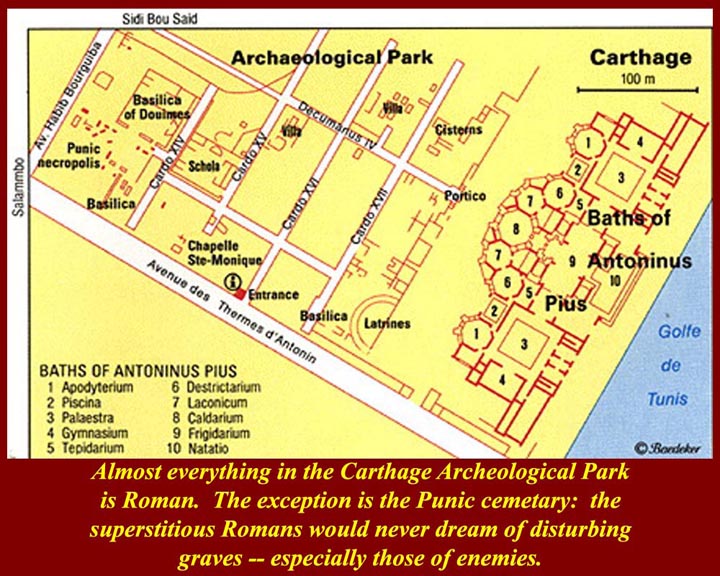
http://www.mmdtkw.org/CNAf0806CathageArcheologicalPark.jpg
The small Carthage archeological park is representational rather than exhaustive. The Antonine Baths, the remains of which are in the park, were the largest structure ever built in Carthage. (More on the Baths below.)
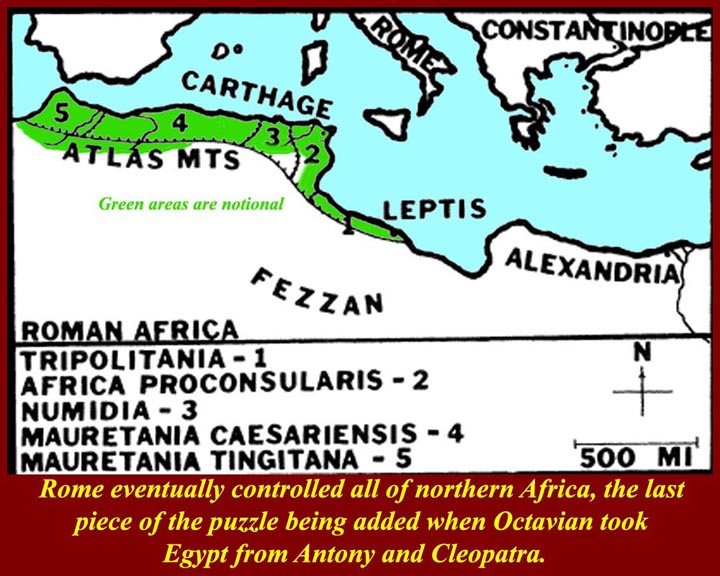
http://www.mmdtkw.org/CNAf0807RomanNAfProvinces.jpg
Provincial boundaries set in the first century AD were fairly stable. A major reorganization took place during the reign of Diocletian at the end of the third century.
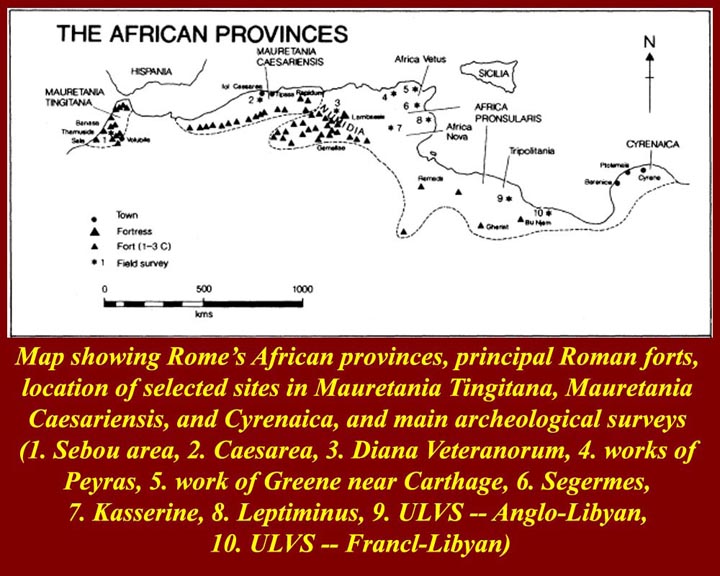
http://www.mmdtkw.org/CNAf0808ProvincesDigs.jpg
A map of Roman cities and forts and the main archeological surveys that mapped them.
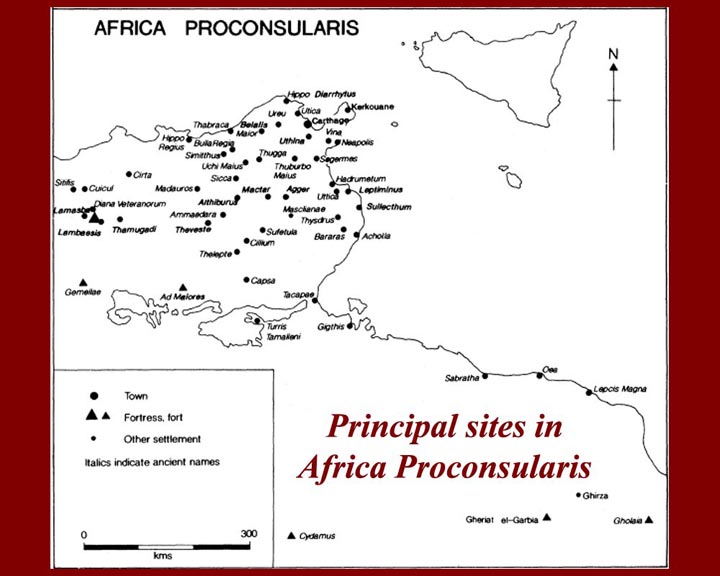
http://www.mmdtkw.org/CNAf0809ProconsularisSites.jpg
Africa Proconsularis was a combination of "Africa Vetus" (now northern Tunisia) and "Africa Nova" )southern Tunisia and Western Libya), the first two Republican Roman provinces in North Africa.
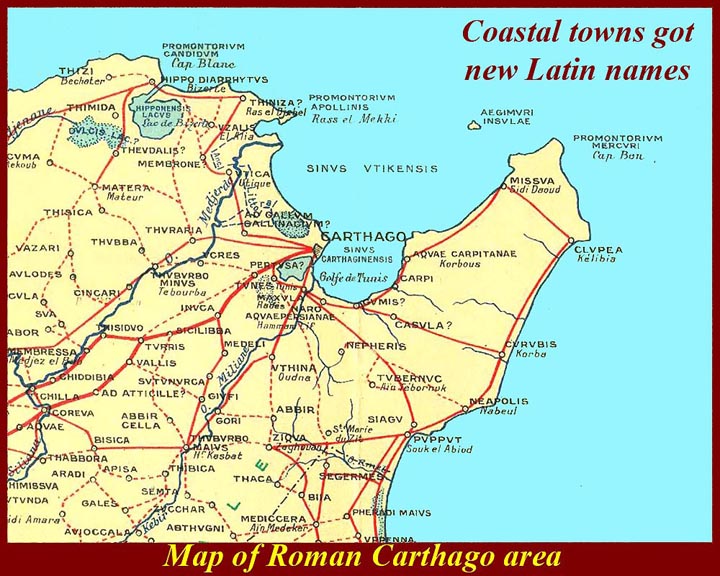
http://www.mmdtkw.org/CNAf0810RomanNamesMap.jpg
Most of the coastal and many of the inland Punic cities and towns were renamed (and renamed again after the Arab conquest). By and large, the western world today uses the Roman names and the old Punic names are mostly ignored. The Roman name for Carthage was Carthago -- fairly distant from the Punic name, which, as we know, was Kart-Hadasht.
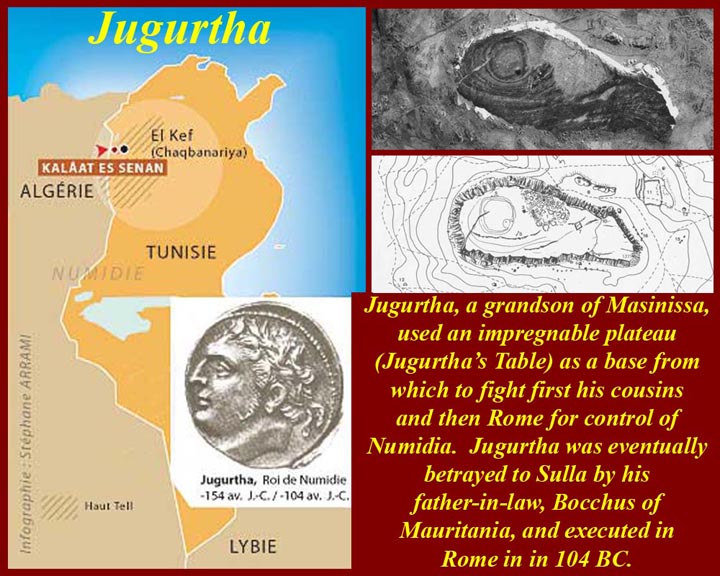
http://www.mmdtkw.org/CNAf0811Jugurtha.jpg
Jugurtha was a grandson of Masinissa, but not in the regular line of succession. He fought his cousins, who were the legitimate successors to the Numidian leadership, and used massive bribes of Roman officials in North Africa and in the Roman Senate to gain Roman support for his pretensions. Ultimately, even Rome was disgusted by his behavior, and legions were dispatched to bring him to account. It was a drawn out operation, due mainly to Jugurtha's superior knowledge of the terrain and to his wide popular support in what is now west-central Tunisia.
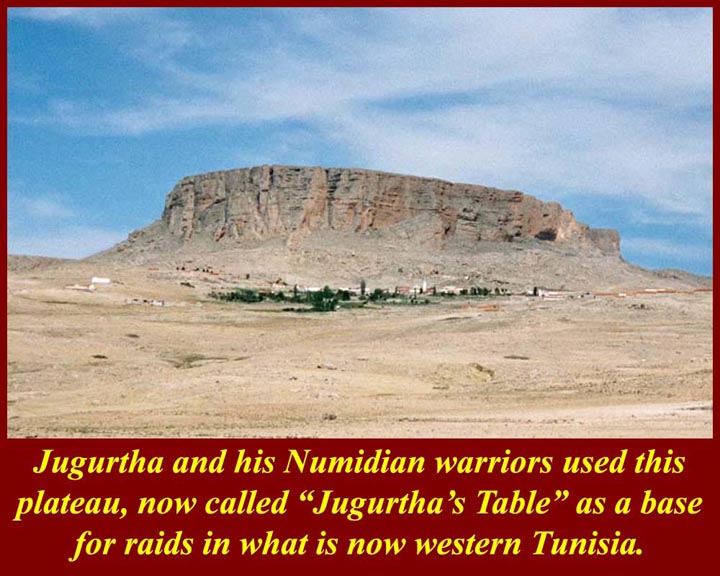
http://www.mmdtkw.org/CNAf0812JugurthaTable.jpg
"Jugurtha's Table", his rugged stronghold, was the main reason that the "Jugurthine War" lasted more than six years.
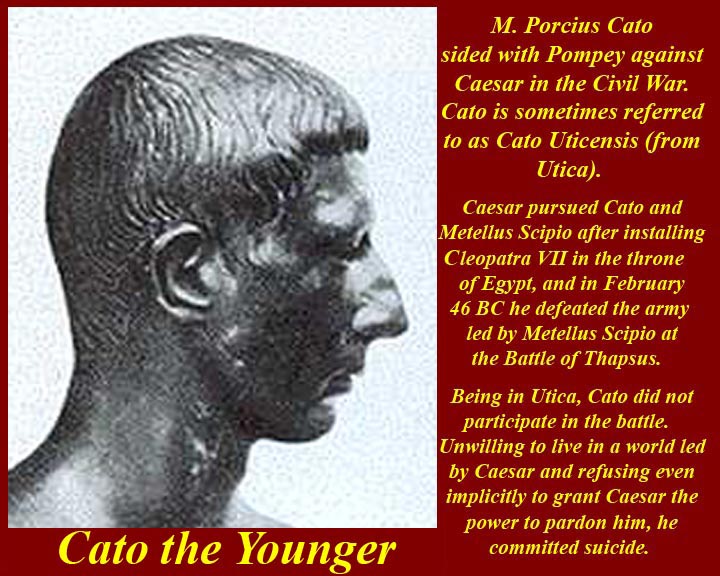
http://www.mmdtkw.org/CNAf0813CatoYounger.jpg
After installing Cleopatra as Queen of Egypt, Julius Caesar turned his attention to North Africa. Cato the Younger, the grandson of Cato the Elder (the 3rd Punic War rabble -rouser) had sided with Pompey during the the Roman Civil War and was holed up in Utica. When Caesar defeated the Pompeian forces at Thapsus (February 6, 46 BC) Cato decided that he'd rather be dead than live in Caesar's monarchy. He turned down Caesar's probable pardon and gutted himself. According to Plutarchian legend, a servant found him and a surgeon sewed him up, but, when he was left alone, he pulled out the stitches and and removed his own intestines.
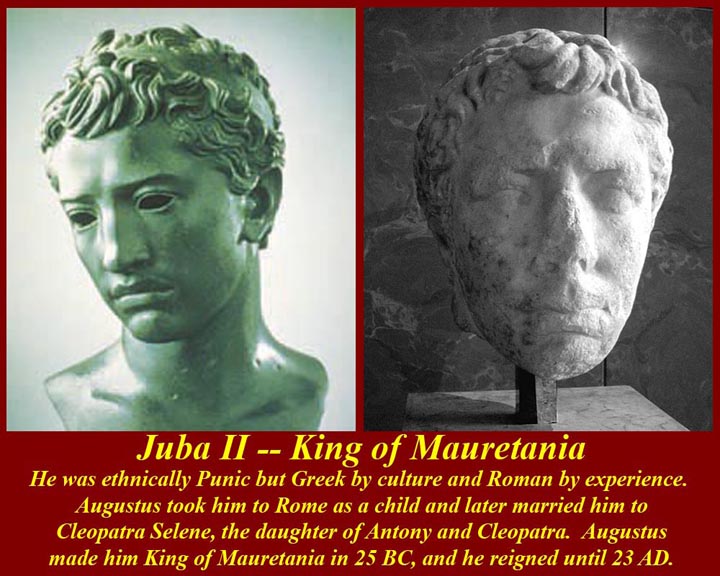
http://www.mmdtkw.org/CNAf0814Juba2.jpg
Juba II was brought back to Rome by Augustus as a youth after Augustus defeated Juba I and made Mauritania a Roman dependency. Juba II was raised in the imperial court, and received a Greco-Roman education. Augustus also arranged a marriage for him with the Cleopatra Selene, the alluring daughter of Antony and Cleopatra. Juba II was thoroughly committed to Rome by the time Augustus made him King in 25 BC. He ruled for 47 years and, with Cleopatra Selene, made his capital, Cirta, into a rich and sophisticated Roman city.
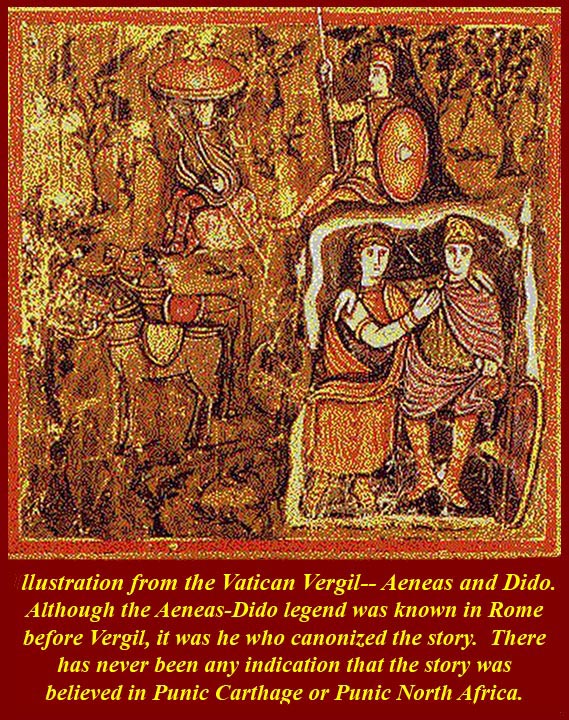
http://www.mmdtkw.org/CNAf0815DidoAeneas.jpg
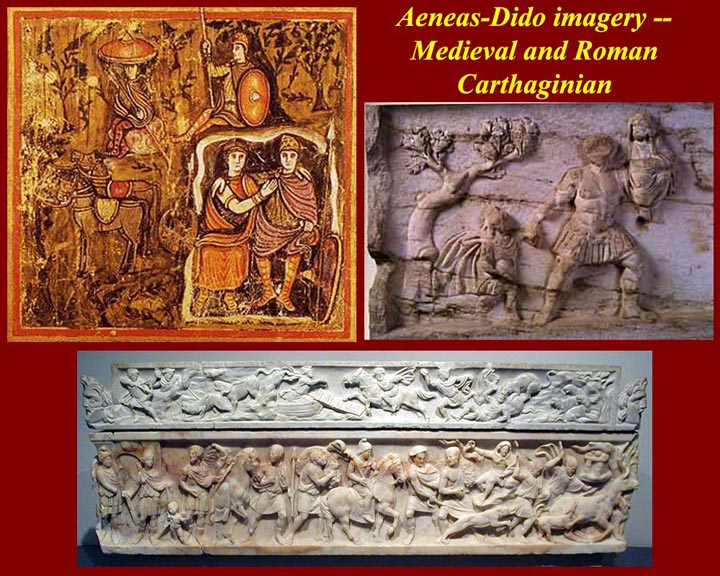
http://www.mmdtkw.org/CNAf0816Aeneas-Dido.jpg
After the Dido-Aeneas legend was written up by Vergil, it became a popular decorative motif in Roman North Africa.
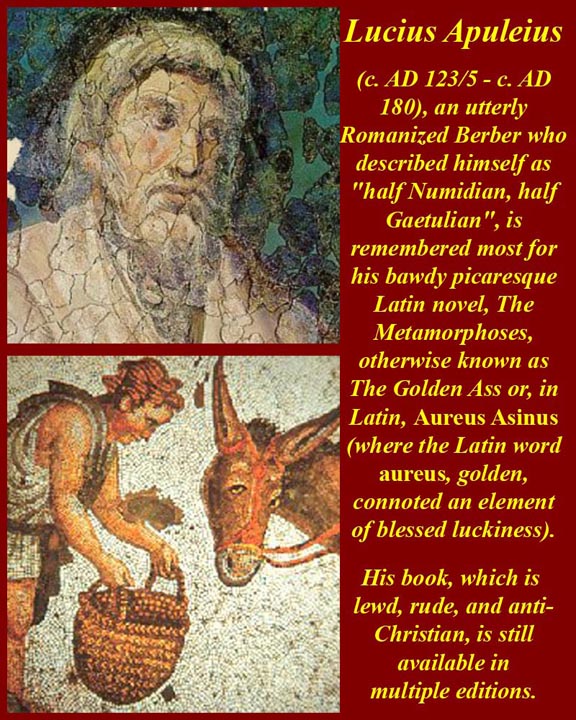
http://www.mmdtkw.org/CNAf0817Apuleius.jpg
Apuleus of Medaurus was a Romanized 2nd century Numidian who is most famous for his Metamorphoses, usually known as The Golden Asse (golden, in this context, meaning fortunate). The book is the only Roman novel that is still available, and its raucous bawdiness ensures that it still widely read. An analysis of the book is available on the Internet at http://www.jnanam.net/golden-ass/, and the full text in Adlington's 1566 English translation is at http://books.eserver.org/fiction/apuleius/. Adlington's translation is assumed to have been the inspiration for Shakespeare's Midsummer Night's Dream.
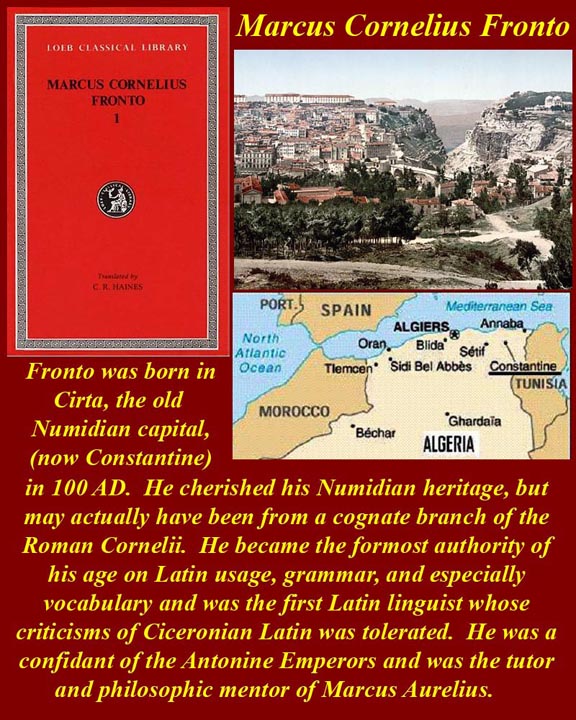
http://www.mmdtkw.org/CNAF0818Fronto.jpg
Fronto was born to a Roman family in Cirta, Numidia, but he always proudly maintained that he was a Numidian. He became a great scholar, Latin grammarian, and, especially, a broadener of Latin vocabulary. He is considered second only to Cicero as an orator and Latinist -- in his own time he was considered superior to Cicero, but Cicero's reputation was boosted by Roman renaissance Humanists. Fronto went to Rome during the reign of Hadrian (117 - 138 AD) and quickly became a fixture at the Imperial court. He was the tutor and philosophical (Stoic) mentor of Marcus Aurelius.
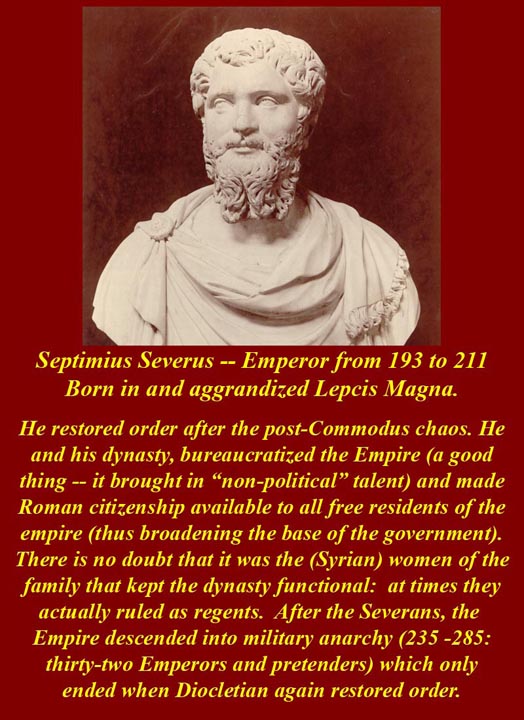
http://www.mmdtkw.org/CNAf0819Severus.jpg
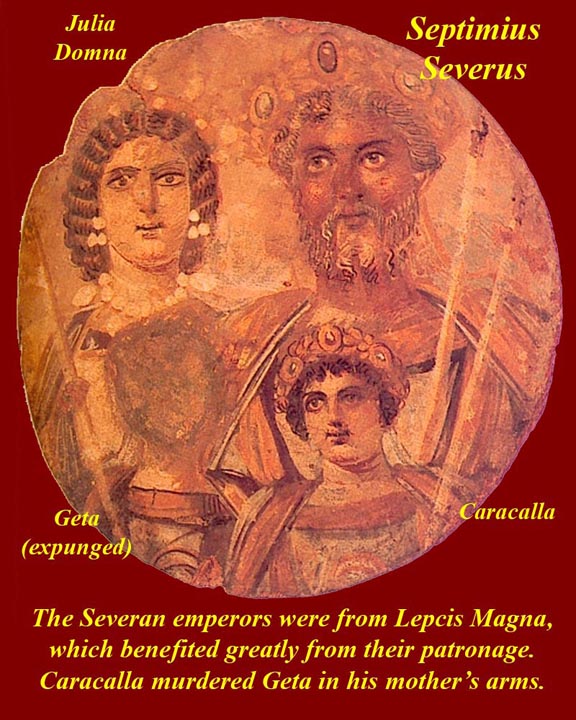
http://www.mmdtkw.org/CNAf0820SeveransLepcis.jpg
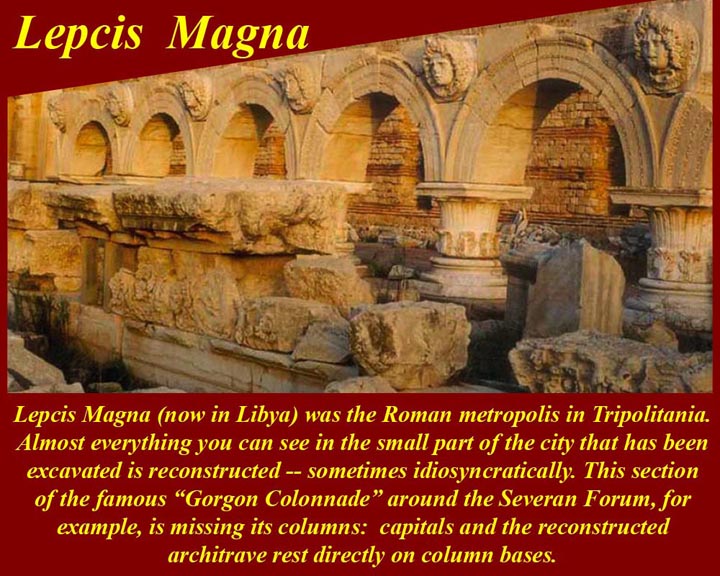
http://www.mmdtkw.org/CNAf0821Lepsis.jpg
Septimius Severus, from Lepcis Magna, picked up the Imperial pieces following the chaos engendered by the assassination of Commodus and the end of the Antonine dynasty. The Severan dynasty (193 - 235 AD), by and large, did very well by Rome (even Caracalla, who killed his own brother in order to ensure his sole succession to Septimius Severus.) The Severans were most beneficial to the own home town and to North Africa in general. During this period, Lepcis Magna was aggrandized and became one of the richest cities in the Empire (as its ruins still attest. After the Severans, Roman North Africa went into permanent decline and Christian North Africa came into its own. The 50 year post-Severan period throughout the Empire is known as the "Military Anarchy" during which 34 military Emperors and pretenders jostled for power.
Physical Remains of Roman North Africa
Antonine Baths, Carthage
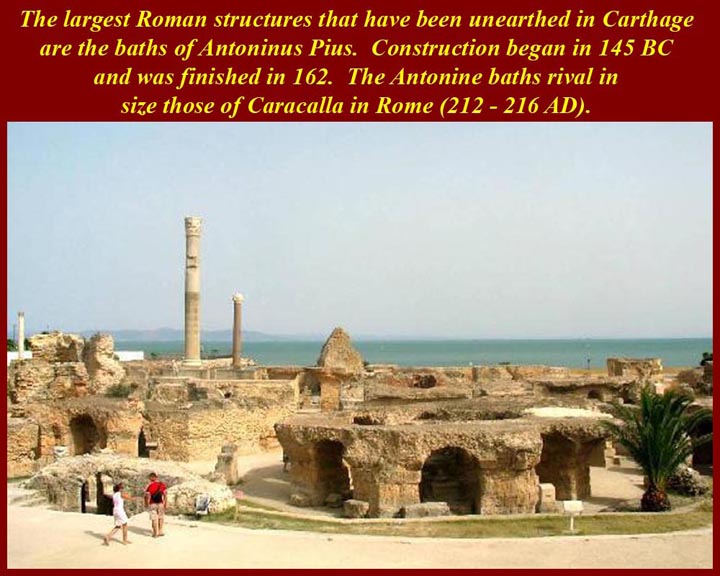
http://www.mmdtkw.org/CNAf0822CarthageAntonineBaths.jpg
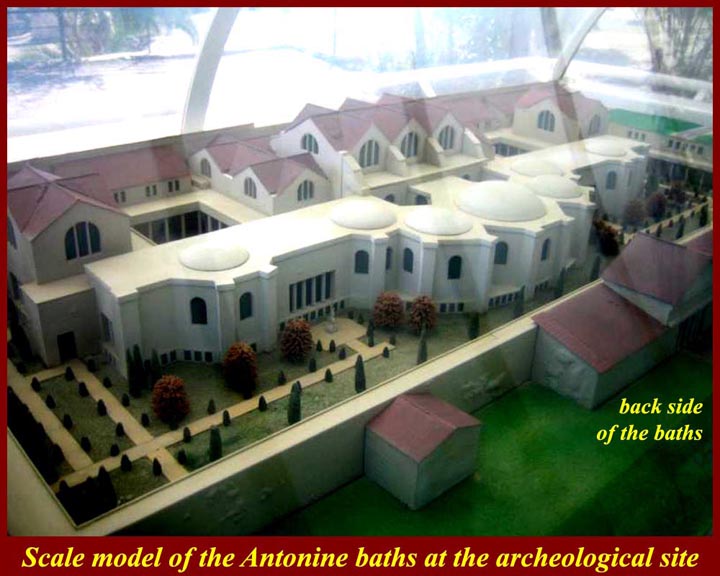
http://www.mmdtkw.org/CNAf0823AntonineBathsModel.jpg
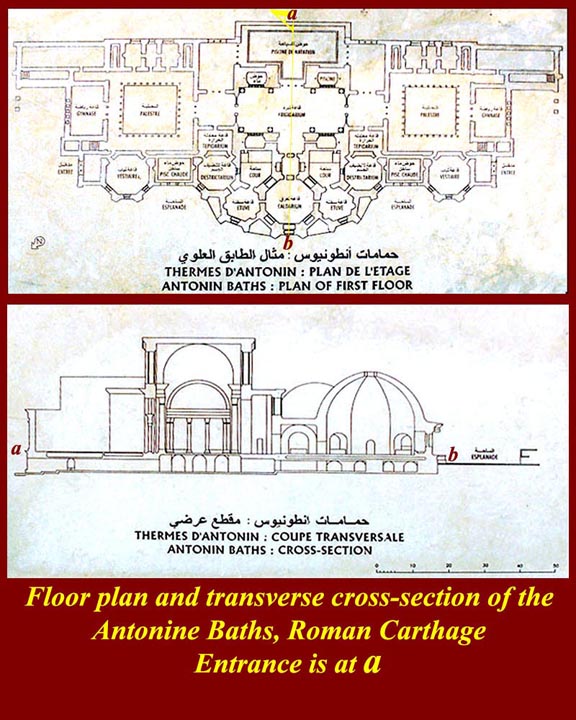
http://www.mmdtkw.org/CNAf0824Plan-BathsAntoninus.jpg
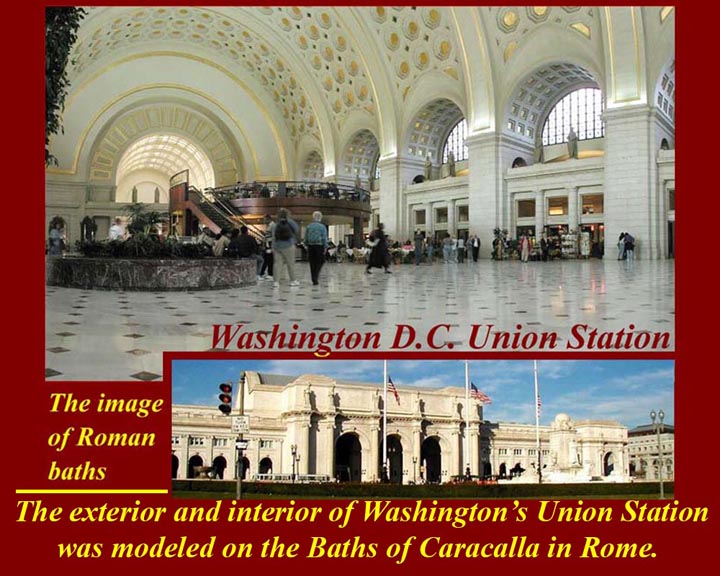
http://www.mmdtkw.org/CNAf0825UnionStation98.jpg
Roman Theatres, Carthage and elsewhere
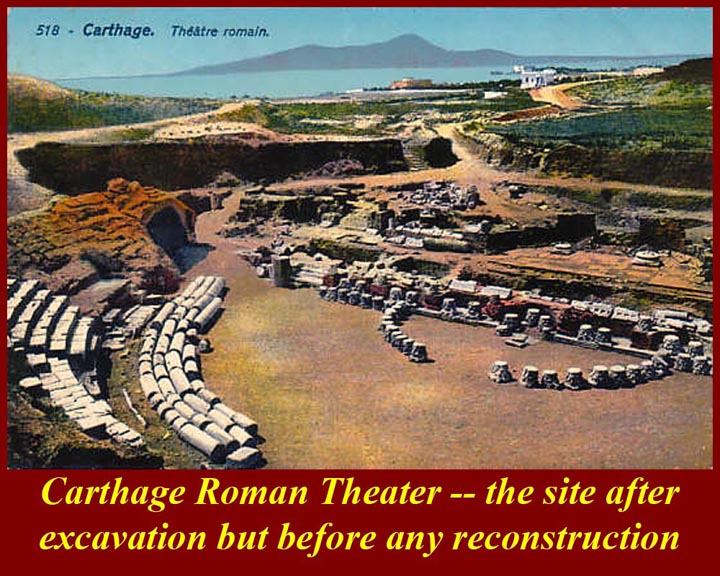
http://www.mmdtkw.org/CNAf0826CarthageTheatreUnreconst.jpg
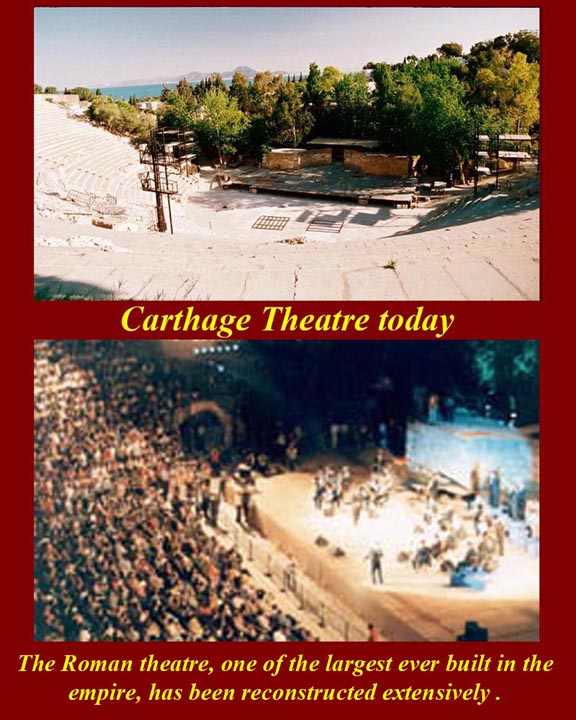
http://www.mmdtkw.org/CNAf0827CarthageTheatreToday.jpg
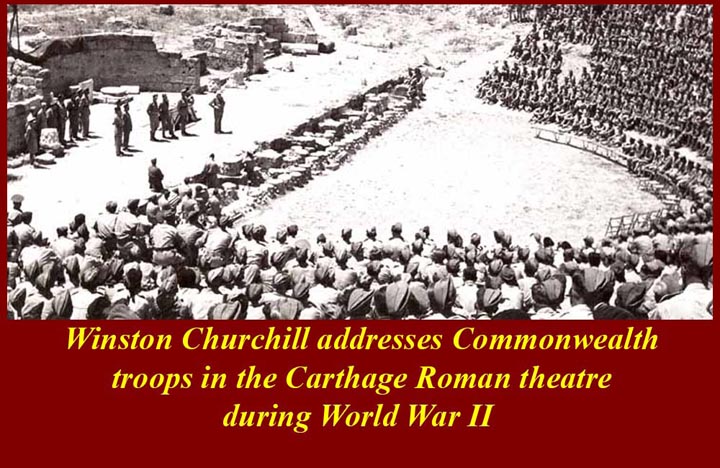
http://www.mmdtkw.org/CNAf0828CarthageTheatreChurchill.jpg
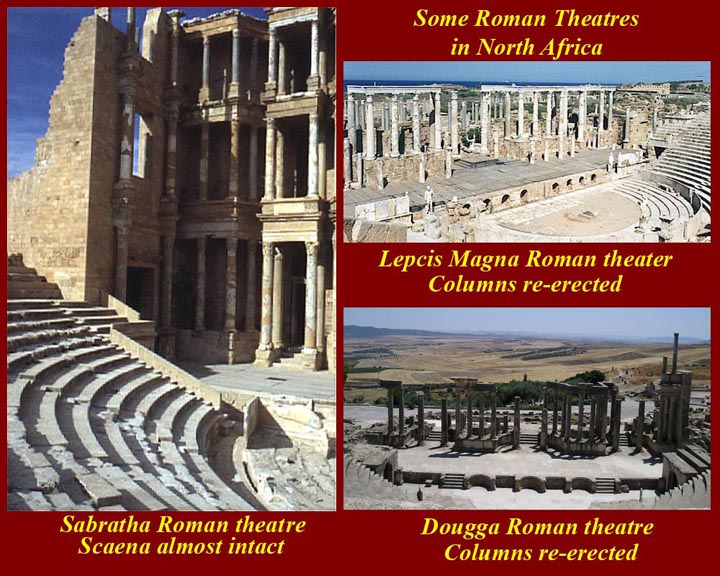
http://www.mmdtkw.org/CNAf0829MoreNAfRomanTheatres.jpg
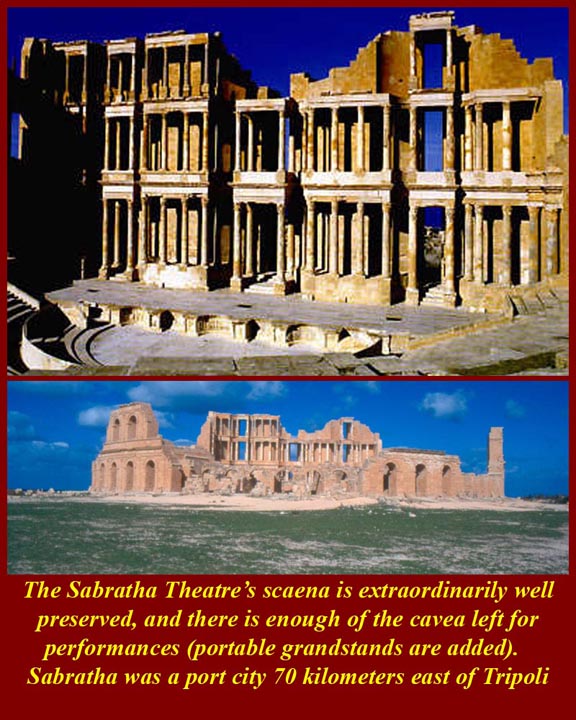
http://www.mmdtkw.org/CNAf0830TheatreSabratha.jpg
Villas at Carthage
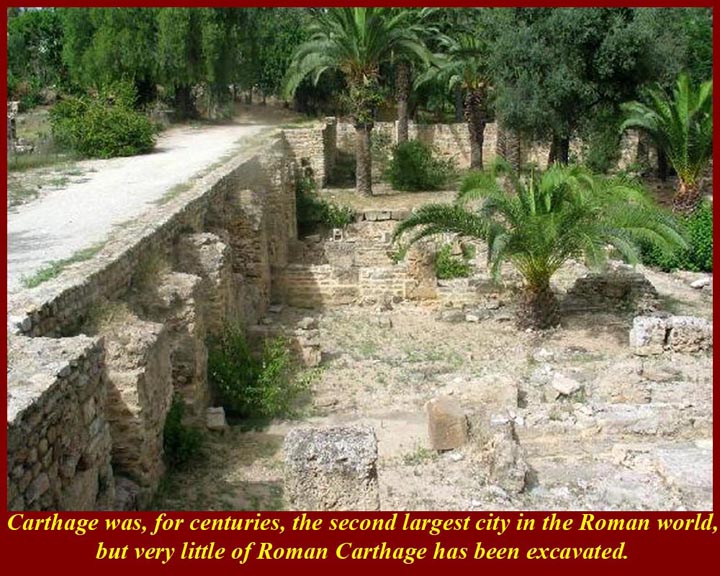
http://www.mmdtkw.org/CNAF0831RomanVillasCarthage.jpg
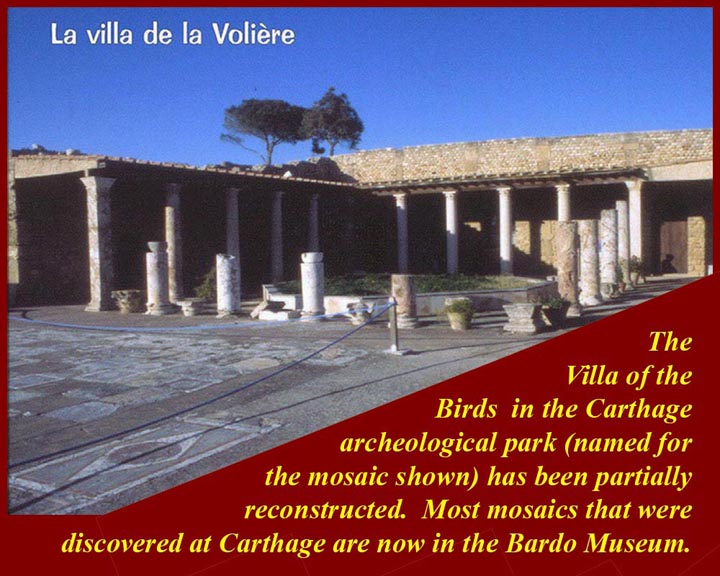
http://www.mmdtkw.org/CNAf0832BirdVilla.jpg
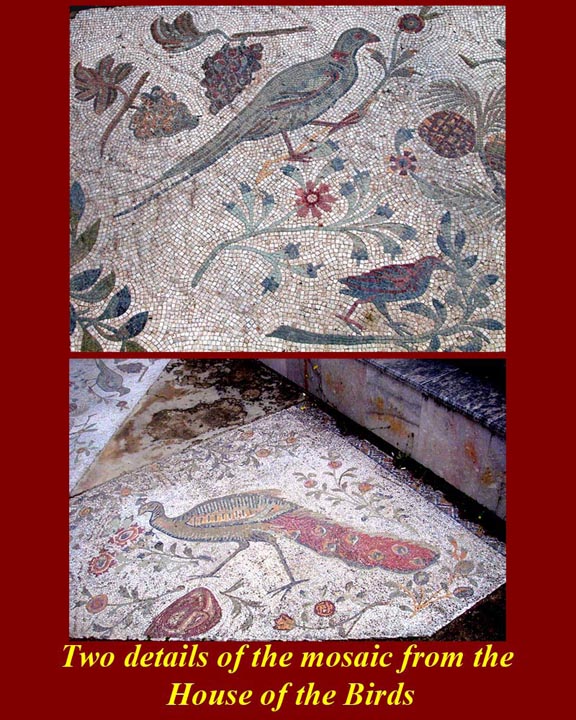
http://www.mmdtkw.org/CNAf0833BirdVillaDetail.jpg
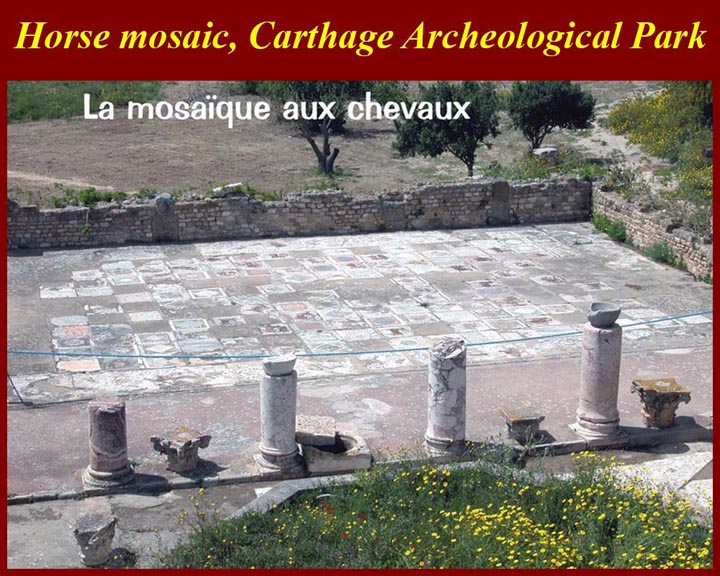
http://www.mmdtkw.org/CNAf0834HorseMosaic.jpg
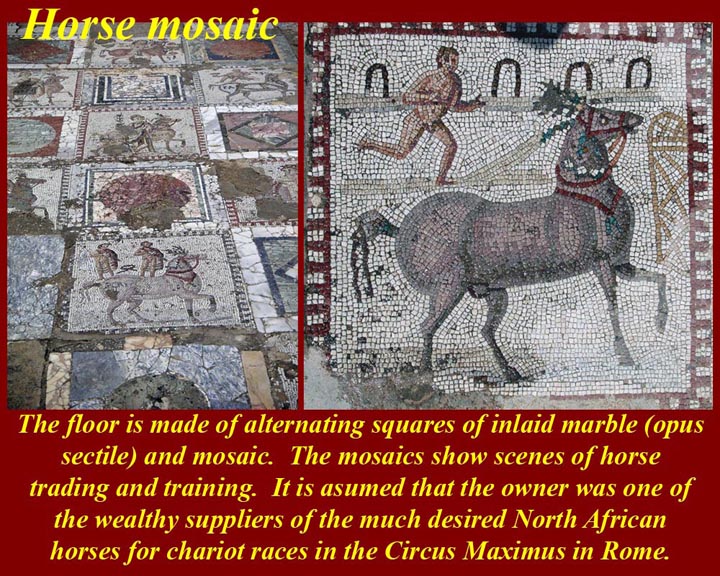
http://www.mmdtkw.org/CNAf0835HorseMosaicDetail.jpg
Carthage Aqueduct
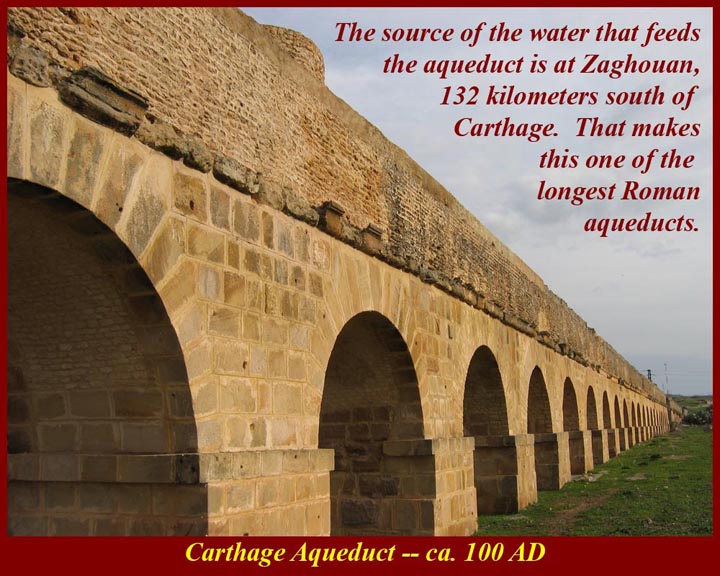
http://www.mmdtkw.org/CNAf0836CarthageAqueduct.jpg
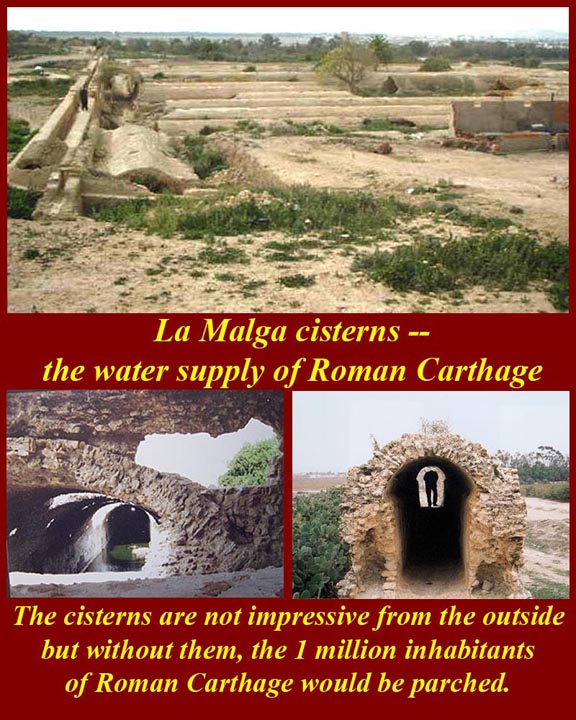
http://www.mmdtkw.org/CNAf0837CarthageWater.jpg
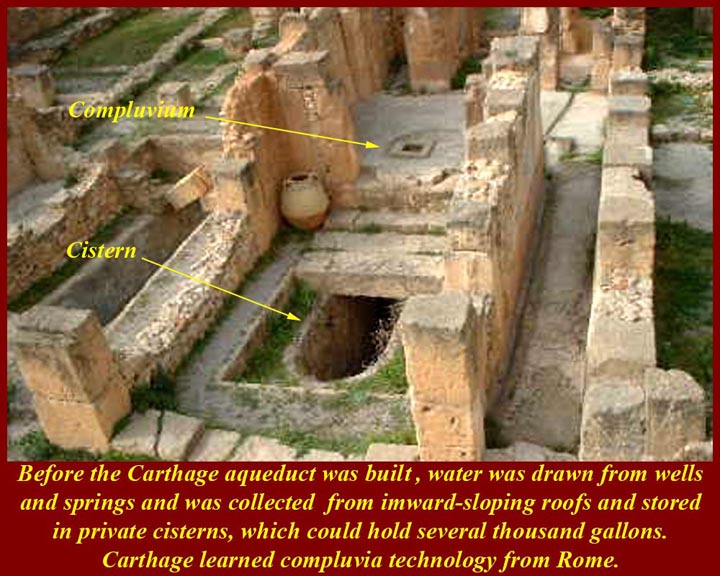
http://www.mmdtkw.org/CNAf0838CarthageWaterCompluvium.jpg
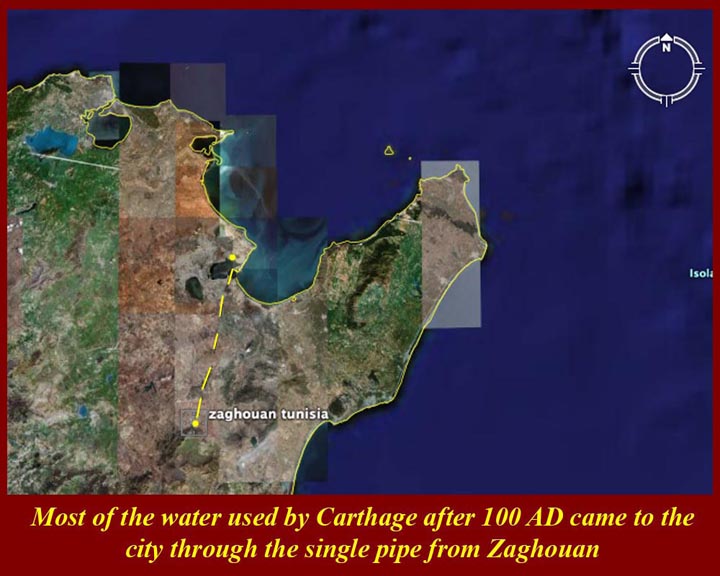
http://www.mmdtkw.org/CNAf0839CarthageWaterSatellite.jpg
Inscription
Carthage and other Amphitheatres
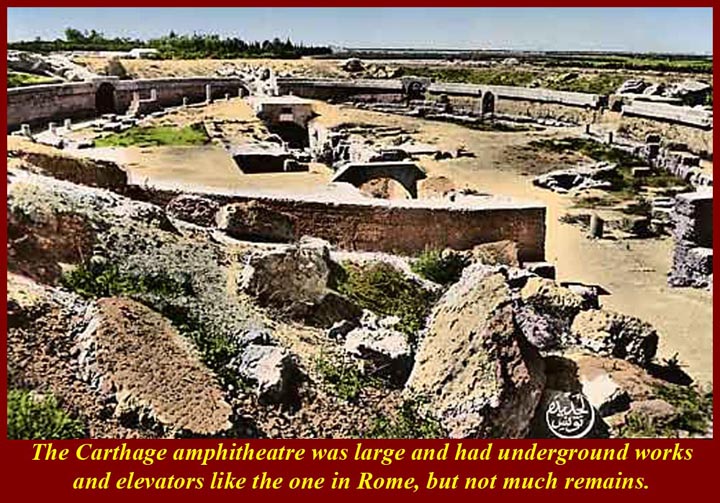
http://www.mmdtkw.org/CNAf0841CarthageAmphitheatre.jpg
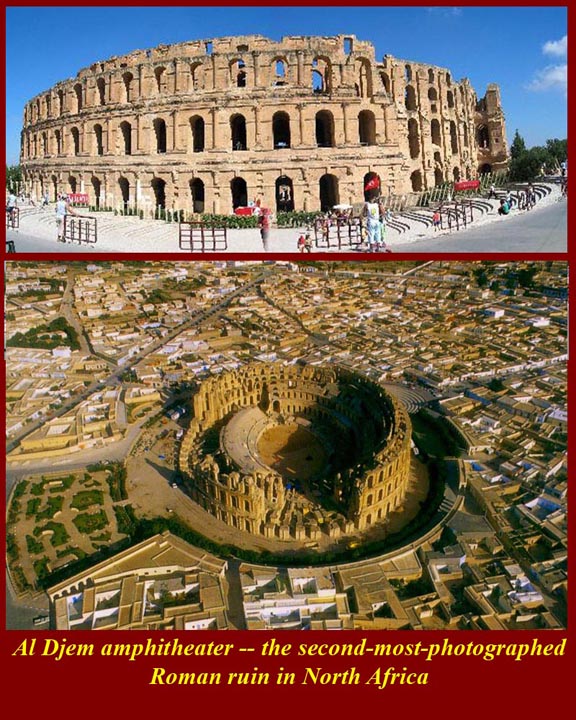
http://www.mmdtkw.org/CNAF0842DjemAmphitheater.jpg
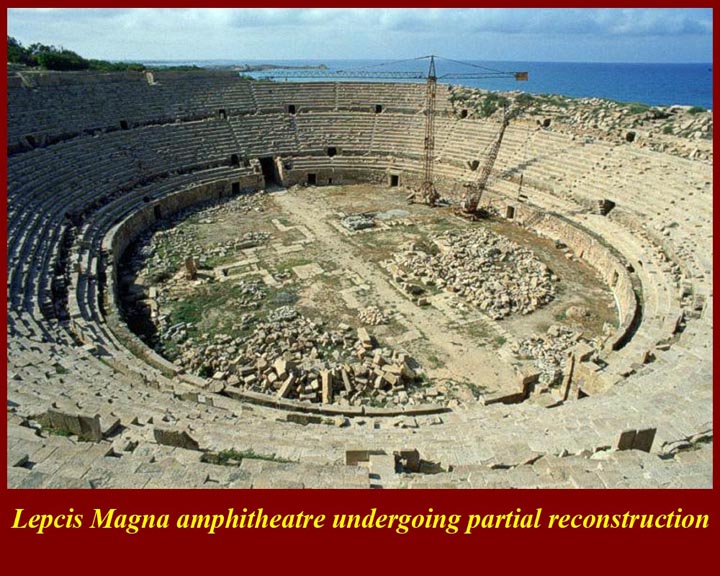
http://www.mmdtkw.org/CNAF0843LepcisAmphitheater.jpg
Latrines
Dougga
Sbeitla
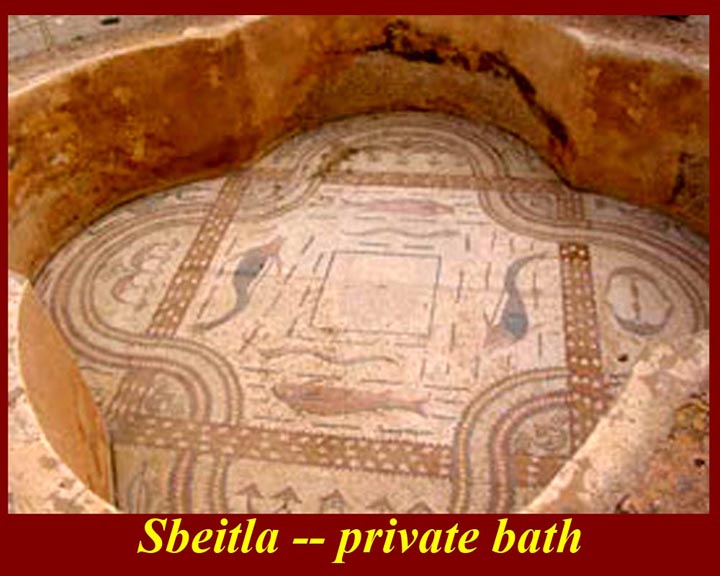
http://www.mmdtkw.org/CNAf0847PrivatebathSbeitla.jpg
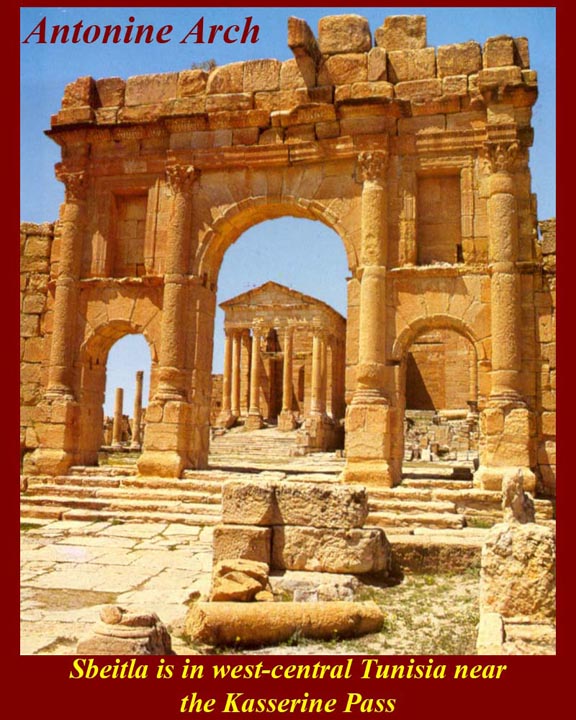
http://www.mmdtkw.org/CNAf0848AntonineGateSbeitla.jpg
Mosaics in the Bardo Museum
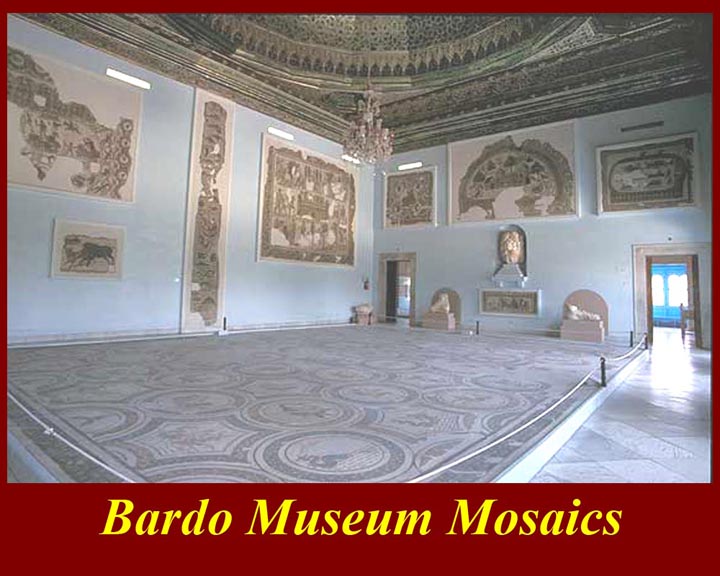
http://www.mmdtkw.org/CNAf0849BardoMosaics1.jpg
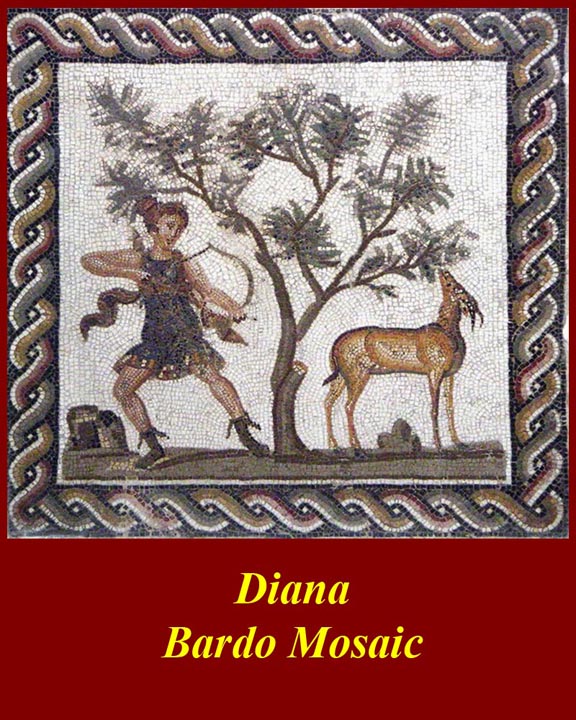
http://www.mmdtkw.org/CNAf0850BardoMosaics2.jpg
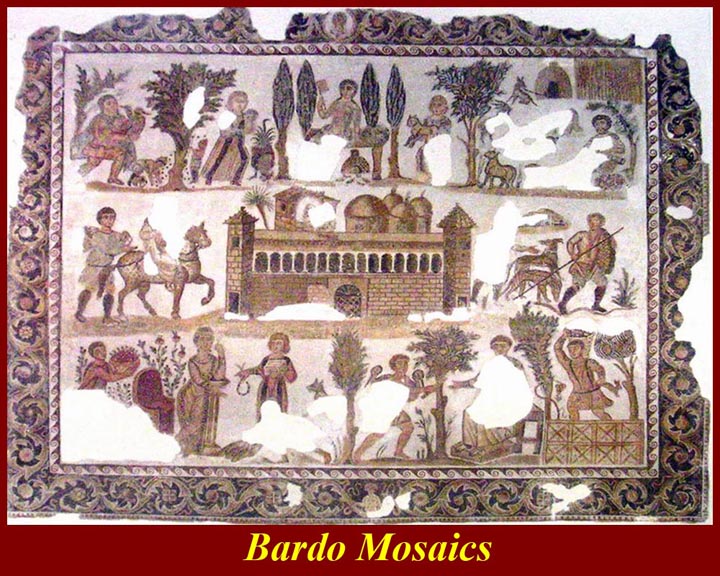
http://www.mmdtkw.org/CNAf0851BardoMosaics3.jpg
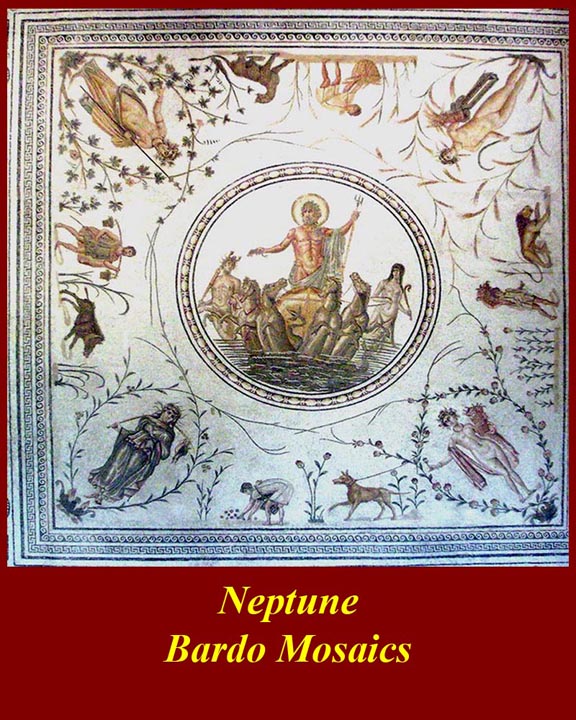
http://www.mmdtkw.org/CNAf0852BardoMosaics4.jpg
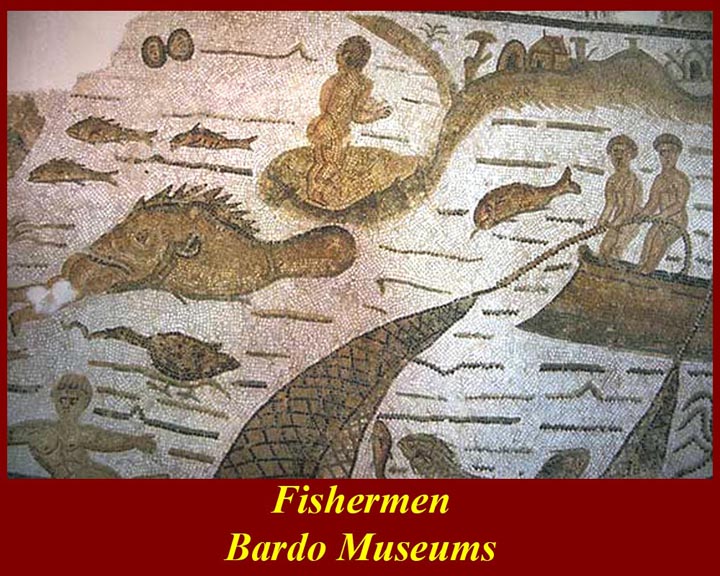
http://www.mmdtkw.org/CNAf0853BardoMosaics5.jpg
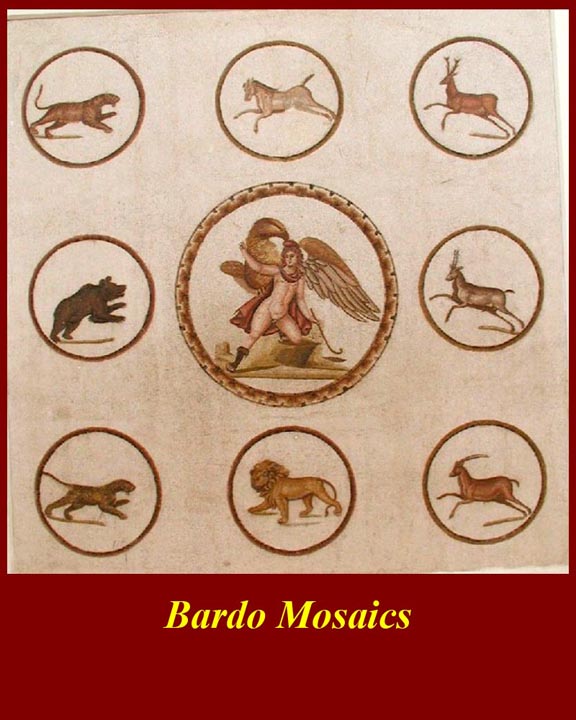
http://www.mmdtkw.org/CNAf0854BardoMosaics6.jpg
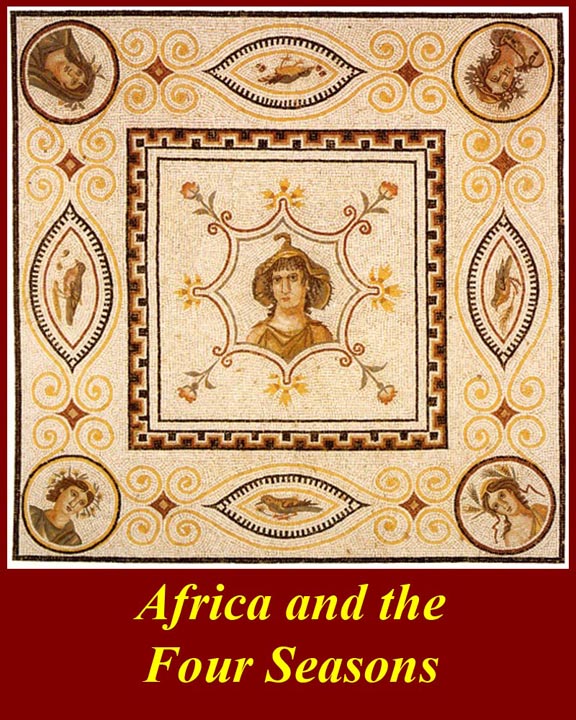
http://www.mmdtkw.org/CNAf0855BardoMosaics7.jpg
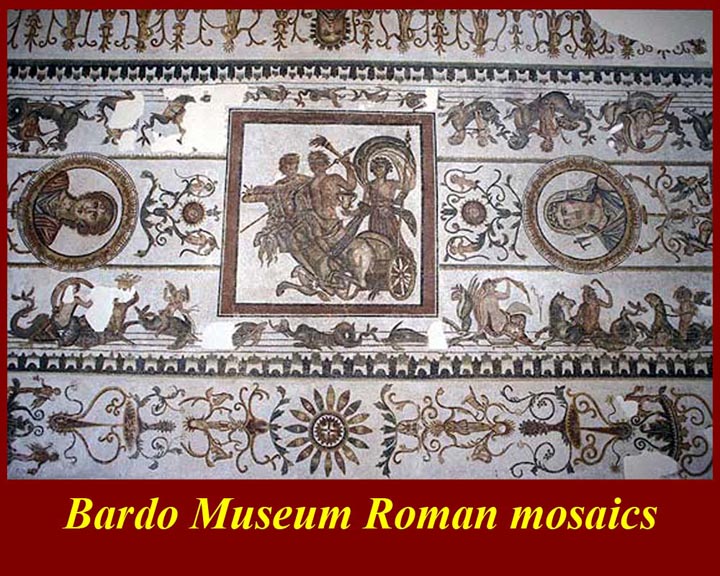
http://www.mmdtkw.org/CNAf0856BardoMosaics8.jpg
Bardo Sculptures
Bardo Museum
Carthaginian/North African oil lamp industry

